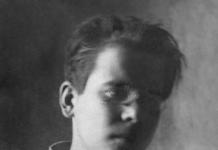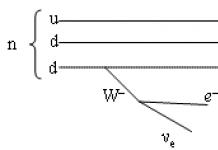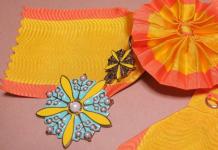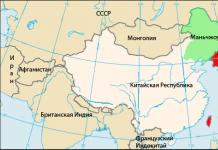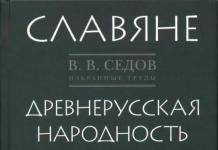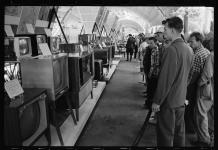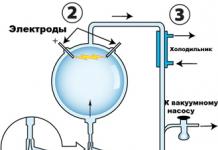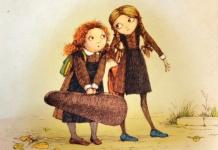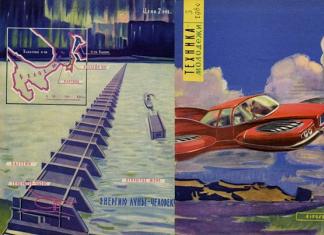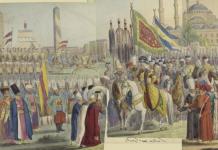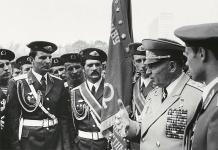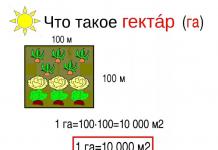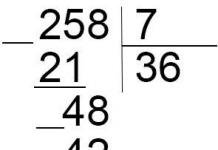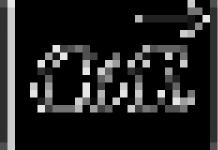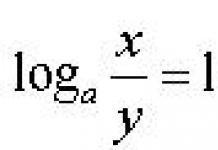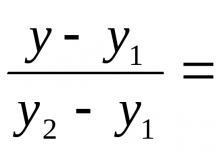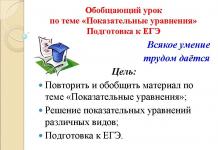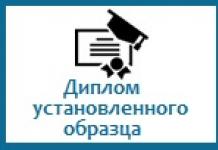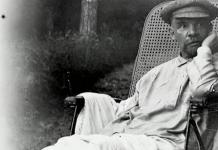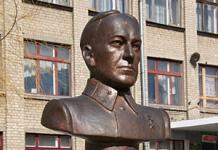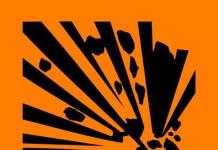The result of the innovation process is the qualitative changes in the environment that occur after the introduction of a fundamentally new component into it. Technology is a collection of techniques used in a particular craft or business. Innovative technologies in kindergarten provide for the creation and use in work of modern techniques and components for the modernization of the educational process.
Innovative technologies are being introduced to solve existing problems, improve the quality of educational services, meet the needs of parents, and gain competitive advantages over other preschool educational institutions.
To achieve these goals, teachers develop unique models for raising babies. At the same time, methodological tools, techniques and methods of teaching are used that correspond to the adopted model. Innovation involves not only the development of new programs, but also management activities, work with personnel, interaction with parents, and so on. Innovative technologies in a preschool educational institution according to the Federal State Educational Standard, the requirements for them Modern educational technologies in a preschool educational institution must implement the basic concept of the Federal State Educational Standard - the formation of a comprehensively developed personality, and the educator is not a leader, but an assistant.
Innovative pedagogical technologies in preschool educational institutions according to the Federal State Educational Standard should stimulate in children: cognitive activity, the desire to solve creative and intellectual problems; communication skills in communication with peers and adults; understanding of one's own feelings, abilities, actions; reflection skills. Innovative technologies used in kindergarten must meet the following requirements: conceptuality - the educational process is based on a specific scientific concept; consistency - technologies must have the characteristics of a system, that is, be logical, holistic, consist of interconnected elements; manageability - the teacher must understand the goals set, be able to plan the learning process and make adjustments to it; reproducibility - the technology should not lose its effectiveness if it is used by different teachers; efficiency - the results and costs obtained as a result of the use of technology should be comparable.
Types of innovative technologies in preschool educational institutions
In the work of educators in a preschool educational institution, innovative technologies of the following main types can be used: health-preserving, related to project activities, information and communication, personality-oriented, play. Let's consider each of these types in more detail. Health-preserving technologies occupy a special place among all pedagogical technologies. Their goals are to strengthen the level of real health of children, education of valeological culture and competence. Innovative technologies in kindergarten in the direction of preserving children's health can be divided into three subgroups: preserving and promoting health - stretching, dynamic pauses, outdoor and sports games, relaxation, finger gymnastics, eye exercises, breathing exercises, orthopedic gymnastics, corrective gymnastics; teaching a healthy way of life - physical education classes, problem-playing exercises, communication games, point self-massage; correctional - fairy tale therapy, technologies of musical influence, color therapy, hardening. An analysis of the work on the use of innovative technologies in preschool educational institutions shows that projects are a powerful tool for the development of creative and research activities of children, knowledge of the world around them based on personal experience, and improvement of communication skills with peers and adults. Children's projects can be creative, informational, adventure, research, practical. They are implemented by the child independently, in a group, with the involvement of a teacher or family. Project activities can be divided into the following types: narrative - broadcasting impressions and emotions through storytelling, playing music, drawing, modeling; playroom - group, theatrical performances, dances; constructive - creating useful things; excursion - acquaintance with nature and the surrounding world. Information and computer technologies are used both in the work of teachers and in the construction of the educational process. Children are interested in a computer, it helps to raise urgent questions, it is easier to teach new things, to simulate certain situations, to prepare a visual background for a cognitive lesson. There are many computer programs for teaching children. One of the main advantages of this way of working is individualization: the child is engaged in his own rhythm, shows his creativity and increases self-confidence when he sees progress. Personally-oriented innovative technologies in preschool educational institutions in the work of educators are an alternative to the classical approach and are designed to create favorable conditions for the development and implementation of the creative potential of pupils. The purpose of the educational process is the development of the child's personality. Here we can distinguish the following subgroups: humane and personal technologies are implemented, for example, by creating rooms for psychological relief, and allow special children to successfully adapt in the environment of preschool educational institutions; cooperation technologies provide for equality, democracy, partnership in building relationships between a child and a teacher; free upbringing technologies imply giving the child independence in solving problems, developing the skills to achieve results based on internal motives, and not external influences. As the reports on the introduction of innovative pedagogical technologies of preschool educational institutions show, game technologies are one of the most effective. They provide for the use of a complex of games that form the ability to systematize, generalize and characterize objects, distinguish truth from fiction, develop ingenuity, reaction speed, mental processes, phonemic hearing, etc. Innovative gaming technologies develop imagination, attentiveness, creativity, observation, logical thinking, emotional-figurative perception, give basic ideas about the world around. Innovative gaming technologies in preschool educational institutions Unfortunately, for a number of reasons, games are increasingly being pushed out of the educational process in preschool educational organizations. However, play is a basic need for a child and therefore cannot be excluded from the educational process. When it comes to innovative gaming technologies in a preschool educational institution according to the Federal State Educational Standard, we are talking about an extensive group of methods that are implemented in the form of pedagogical games. The pedagogical game differs from the usual game in a number of features, including a clear goal and a corresponding pedagogical result, as well as a pronounced educational and cognitive orientation. According to the Federal State Educational Standard, the following educational areas are distinguished: social and communicative development; cognitive development; speech development; artistic and aesthetic development; physical development. In each of these areas, innovative gaming technologies should be applied. Within the framework of social and communicative development, game trainings, plot-role and theatrical games are used. This allows you to achieve the original goals: assimilation of values and norms in society, the development of interaction with peers and adults, empathy, the formation of readiness for joint activities. Cognitive development provides for the strengthening of cognitive motivation, curiosity, creative activity, imagination, the formation of primary ideas about oneself. For this, educational games, games aimed at developing cognitive abilities, creating problematic game situations, and consolidating the knowledge gained are used. Gaming technologies as part of speech development include the enrichment of an active vocabulary, the construction of correct monologue and dialogical speech, the development of intonation and sound culture of speech, familiarity with literature, and the creation of prerequisites for teaching literacy. Within the framework of artistic and aesthetic development, training in the value-semantic perception of works of art and nature takes place. Physical development is necessary to gain experience in such activities that help to strengthen and maintain health, improve coordination of movements, etc. Innovative gaming technologies in a preschool educational institution according to the Federal State Educational Standard help to achieve goals in these areas, while not losing motivation of pupils. When it comes to innovative technologies in the educational process, do not forget about the professionalism of the educator. He is required to introduce new methods of work and master new professional skills. The teacher must determine the natural inclinations of each child, reveal and analyze them, build the right relationship with the pupils. This requires constantly increasing the competence of teachers, improving their organizational and research skills. For the development of innovative technologies in the preschool educational institution, it is possible to conduct master classes that will help to constantly improve as a person and as a professional.
Organization of innovative activities in the educational institution MADOU "Kindergarten No. 18"
In modern society, dynamic changes are taking place, which are characterized by a huge number of innovations. Innovative processes are a regularity in the development of modern preschool education. Why do we need a kindergarten? This is an extremely significant question, which means that we have a need to define our place and our destination. In our city, parents choose the best kindergarten for their child. The attractiveness of a preschool educational institution becomes the main factor in its survival, which is why the level of organization of a preschool educational institution must be higher than today.
Our preschool institution has always been engaged in innovative activities, innovative activities are carried out in the following areas:
Innovation in working with educators
Innovation in working with children
Parenting innovation

In order to develop an innovative orientation in work with teachers, the following forms of work are used: pedagogical advice and seminars, workshops of non-traditional forms, a master class, pedagogical rings, pedagogical projects, club activities, the use of ICT technologies, etc.
Our teachers always strive to be in the thick of events of the preschool educational institution, find non-standard solutions and the opportunity to realize their creative abilities.

One of the forms of collective methodological creativity of teachers is club activity. This form of work made it possible to expand and enrich the knowledge of educators, which are necessary for working with children. For five years, two clubs have been operating in the kindergarten: the junior teacher's club "Palette of Skills" and the young teacher's club "Steps of Pedagogical Skill". Within the framework of the clubs, many events were held in an unconventional form, these events contributed to an increase in the level of professional skills and a creative approach to their work.


The participation of the kindergarten team in city and all-Russian competitions is becoming traditional. Only in the 2013-2014 academic year, preschool educational institutions took part in the competition "We learn the world by playing" by the independent association of teachers of the center "MAGISTER", nomination "Methodological development of lessons in preschool educational institutions"; in the all-Russian creative competition "Talantokha", nomination "Creative works and methodological developments of teachers"; in the international network photo-competition "Ogonyok-2014" "Do not bother me to work"; in the All-Russian creative competition "Rassudariki".
Pupils of the kindergarten, together with teachers and parents, are the winners of regional and city competitions:
- regional competition of children's drawing "Let there always be sunshine!" (2011) - 1st place;
- regional competition of social advertising "We are for road safety" (2011) - active participation;
- city competition "Mirror of Nature" (2011 2012) - 1st place, 2nd place;
- city competition "We are children of the Galaxy" (2012) - 2nd place;
- City competition "Green Planet" (2011) -1 place;
- city competition "Variety of age-old traditions" (2013) - 3rd place;
-city competition "Holy Rus" (2014) - 3rd place;
-city competition of arts and crafts "Easter Chime" (2014) -1 place.





The effectiveness of the methodological work of preschool educational institutions is confirmed by the results: Over the past five years, the number of teachers certified for the highest category of 4 people has increased in kindergarten, 15 teachers have the first qualification category, 3 teachers study in absentia at universities.

Implementation of innovative activities in kindergarten guarantees high results of work with children. The use of non-traditional methods and types of educational activities with children, new methods and forms of organizing the upbringing and education of children, modern educational technologies allows us to ensure that the personal and professional self-realization of teachers, as well as the self-development of the personality of pupils.

The main direction of innovative activities of the preschool educational institution of the city of Gaya "Kindergarten No. 18" Ladushki "is the implementation of the regional component in the activities of the kindergarten. Neighborhood with Kazakhstan, Bashkiria, as well as socio-historical conditions determined the multinational composition of the groups of MADOU" Kindergarten No. 18 "Ladushki ": Russians, Ukrainians, Belarusians, Tatars, Kazakhs, Bashkirs, etc. The kindergarten implements the program" I am a Patriot! " - the program is compiled taking into account the age characteristics of children of early and preschool age.Each psychological age includes qualitatively special, specific relations between a child and an adult (social developmental situation); The program involves work with children of younger, middle and senior preschool age (from 3 to 6 years).

This program involves a combination of various methods and techniques: a conversation, a teacher's story, work with illustrative, audio and video materials, with texts that cause a vivid emotional reaction, drawing, presentations, project activities, information and communication technologies (ICT).
The aim of the program is to form a moral and patriotic attitude and a sense of belonging to the family, to the city, native land, to nature and culture through the knowledge of the historical, national and natural characteristics of the city and the region. Based on this, an emphasis was placed on the organization of the educational environment. In each age group, a mini-museum of local lore has been created, the main purpose of which is to familiarize children with a multinational culture, develop a personal culture in children, and familiarize them with a rich cultural heritage.


I think the time has come to talk about additional education - circle activities.
For the development of the artistic and aesthetic direction: the music director in the senior group organized a circle "Young talents"
The teachers of the older groups organized the "Merry Brush" and "Young Artist" circles. The teacher of the younger group - the circle "Draw with fingers"

For the development of the cognitive-speech direction: teachers of the middle groups organized the following circles - "Construction", "Spring", "The Magic World of Theater"

For the development of the physical culture and health-improving direction, the physical culture instructor organized a circle in the preparatory group "Ball School"

The use of ICTs is one of the priorities of education.
Currently, many educators, narrow specialists, methodologists of preschool educational institutions actively use various multimedia tools in their work. Some of these tools are slide, presentation, video presentation. Multimedia technologies allow you to combine text, sound, video, graphics and animation (animation. This allows you to expand the possibilities of traditional education and training:
Making presentations is a very interesting and exciting job that minimizes routine manual work. In addition, the use of computer technology can improve the teacher's professional competence.

It is not easy, but possible, to maintain a high level of the institution's work, to have a high rating and trust among parents in today's financial and economic conditions. As a result of innovative activities: parents became interested participants in the educational process: they actively participate in competitions, in the design of exhibitions in projects, etc.
In our preschool institution, teachers use innovative forms of work with parents:
Parent Meetings Using Computer Presentations
Open Day
Master classes for parents
Sincere conversation
Family holidays, get-togethers
SMS-mail
Family contests.
Family club.

For two years in the kindergarten the club "Semya" has been functioning
Purpose: Optimization and harmonization of parent-child relationships in the family.
Tasks:
1. To provide advisory and methodological assistance.
2. Raising the level of psychological culture and culture of raising children in the family.

In the club "Family", which exists in our preschool institution, parents gladly responded to the proposal to participate and implement the parent-child project "Coat of arms of the family"
Project type: creative, short-term, information and practice-oriented, social and educational.
Age and composition of participants: 15 families of senior preschool children.
Time planned for project implementation: 3 weeks.
Problem: lack of understanding of the history, traditions, pedigree of your family.
Project goal: introduction of the method of children's projects in order to involve parents in the pedagogical process; stimulating parents' interest in interacting with teachers in matters of patriotic education of preschool children; upbringing of family patriotism in children.
Project objectives:
To acquaint children with the image and meaning of coats of arms in different countries, eras;
To form in children elementary ideas about the coat of arms as an emblem of the spiritual community of the family;
To form in children gender, family, civic affiliation, patriotic feelings;
Promote the unity of the child's family through the development of interest in a common cause;
Promote the unification of project participants (children and parents) in the creation of collective creative works;
Promote the creativity of project participants.
Joint activities of children and parents:
Development of a family coat of arms project;
Project implementation (creation of the family coat of arms)
Presentation of creative works: presentation
Exhibition of family creativity

The creation of the "Family Coat of Arms" made it possible to show the joint creativity of parents and children, through which the child's soul "touches" the moral and patriotic values of the Motherland and his family.
Emma Machukova
Innovative technologies in a preschool educational institution according to the Federal State Educational Standard
Innovative technologies in a preschool educational institution according to the Federal State Educational Standard
A modern teacher is one who is constantly developing, self-educating, looking for new ways of developing and educating children. All this becomes possible thanks to his active position and creative component.
In modern conditions, a teacher is, first of all, a researcher with a high level of pedagogical skill, scientific psychological and pedagogical thinking, developed pedagogical intuition, critical analysis, reasonable use of advanced pedagogical experience, as well as the need for professional self-education.
From this it follows that only a teacher who is constantly raising the level of his professional skills, capable of introducing innovations.
Implementation innovations in the work of a preschool institution is an important condition for reforming and improving the preschool education system. The development of a kindergarten cannot be carried out otherwise than through the development of innovations, innovations, while the content of education should be focused on the individuality of each child, his personal growth, development of abilities (K. Yu. Belaya, A. G. Asmolov, etc.)... And to educate a creative, self-sufficient person can only be a talented teacher who follows the path of self-improvement and self-development.
Any innovation is nothing more than the creation and subsequent implementation of a fundamentally new component, as a result of which qualitative changes in the environment occur. Technology, in turn, is a collection of various techniques that are used in a particular business, craft or art. In this way, innovative technologies in preschool educational institutions are aimed at creating modern components and techniques, the main goal of which is to modernize the educational process.
Main types innovative technologies,
used in the preschool educational institution.
Modern educational technologies include:
Health-saving technologies;
technologies project activities;
technologies research activities;
Developing technologies;
Correctional technologies;
Information and communication technologies;
Personality-oriented technologies; play technologies.
1. Health-saving technologies are aimed at strengthening the health of the child, instilling in him a healthy lifestyle. This is especially true in light of the deterioration of the environment, the general picture of health, and malnutrition.
Their main goal is to create conditions for the formation of the pupils' idea of a healthy lifestyle, the ability to provide themselves and their neighbors with first aid, as well as the formation and development of knowledge, skills and abilities necessary to maintain their own health. The forms of work are sports events, physical education minutes between classes, morning exercises, eye exercises, breathing exercises, finger and dynamic exercises, relaxation, walks not only in the kindergarten, but also in forest park areas, sports games, hardening, water procedures.
Health-saving technologies can be implemented in different ways. Depending on the goals:
They can be aimed at maintaining health and implemented by medical staff: nutritional control, health monitoring, ensuring a health-preserving environment;
They can be aimed at the physical development of the child through various types of gymnastics (breathing, finger, orthopedic, hardening, dynamic pauses, stretching, alternative methods - for example, hatha yoga;
They can introduce the culture of health;
They can teach a healthy lifestyle through communication games, game sessions, logo rhythm, physical education;
They can be corrective and implemented in sessions of various types of therapies. (art, fairy tale, color).
2. Technologies project activities
Project activities in kindergarten are carried out by the child together with the teacher. The goal is to work on a problem, as a result of which the child receives answers to questions. The knowledge that the child receives in the course of work on the project becomes his personal property and is firmly fixed in the already existing system of knowledge about the world around him.
Projects vary:
by the number of participants: individual, paired, group, frontal;
by duration: short-term, medium-term, long-term;
by priority method: creative, play, research, informational;
by subject: include the child's family, nature, society, cultural values and more.
Training projects can be classified as follows way:
1. "Gaming"- classes that are held in a group in the form of games, dances, exciting entertainment.
2. "Excursion"- projects aimed at a comprehensive and multifaceted study of the surrounding world and society.
3. "Narrative" through which children learn to explain their feelings and emotions through speech, vocals, writing, etc.
4. "Constructive" aimed at teaching the child to create useful subjects: build a birdhouse, plant a flower, etc.
Innovative educational technologies at preschool educational institutions contribute to the physical and psychological development of the child, help him to gain faith in himself and in his own strength, to become independent and responsible. Boys and girls playfully learn the world, and they try to apply the knowledge gained in practice.
3. Technologies research activities
Implementation innovative technologies in a preschool educational institution involves, among other things, the use of so-called research activities by teachers. What does this mean? First of all, we are talking about the fact that the efforts of educators are primarily aimed at forming a research type of thinking in children.
The main goal of research activities is to create experimental activities in which the child is an active participant. The child's direct participation in the experiment allows him to see the process and results with his own eyes.
To do this, in the process of teaching preschoolers, teachers resort to such common methods, how: statement of the problem, its comprehensive analysis, modeling, observation, experimentation, fixing the results, finding solutions and choosing the best one.
Research activity helps a child to identify an actual problem and through a series of actions to solve it. At the same time, the child, like a scientist, conducts research, sets up experiments.
Methods and techniques for organizing research activities:
Observations;
Didactic games;
Simulation of situations;
Labor orders, actions.
Innovative pedagogical technologies at preschool educational institutions help"Mentors" find an approach to each individual child, take into account his characteristics, character traits and mentality, and turn classes into an exciting and extraordinary "adventure"... Thanks to this, parents no longer have to persuade their beloved children to go to kindergarten. Kids visit the preschool educational institution with pleasure and every day enrich their still small knowledge base.
4. Developing technologies
In traditional teaching, the child is presented with a ready-made product, an action template, for study. In developing education, the child must independently come to some kind of opinion, a solution to the problem as a result of the analysis of his actions.
5. Correctional technologies
Their purpose is to relieve the psychoemotional stress of preschoolers. Kinds: fairy tale therapy, color therapy, music therapy.
6. Information and communication technologies
It makes no sense to deny the fact that the modern world is significantly different from the days of the youth of our grandparents, and even our parents. Today it is already very difficult to imagine that even in the very recent past there was no question of using any innovative technologies in preschool educational institutions... Information and communication technologies received their natural development in our "advanced" century. Today so advanced technologies like a computer, tablet or interactive whiteboard will not surprise any preschool child. The situation when a child would not know what a computer is is practically unrealistic. The information age dictates its own rules of the game, which cannot be ignored. Children are drawn to acquiring computer skills. The use of ICT in the classroom and in the educational process has a number of advantages over the traditional forms of organizing classes. For example, thanks to fascinating programs designed to teach a child to read, mathematics, to develop his memory and logical thinking as much as possible, a preschooler can be interested in and instill in him a love of knowledge. The computer is attractive for children, the use of animation, slide presentations, films allows children to arouse an active cognitive interest in the studied phenomena. Animated computer pictures flashing on the screen attract the child, make the child literally adhere to the monitor, allow him to concentrate his attention and observe what is happening with concentration. Children easily memorize new information and then discuss it in a group.
Methods of visual support of the material make it possible to achieve a long-term concentration of the pupils' attention, as well as to simultaneously influence several of the child's senses at once, which contributes to a more solid consolidation of the new knowledge received. With the help of computer programs, it becomes possible to simulate various life situations that could not be recreated in a kindergarten.
Depending on the child's abilities, the program can be tailored specifically for him, that is, focus on his individual development.
At the same time, due to computer illiteracy, teachers can make a number of mistakes. For example, overload the lesson with slides, be insufficiently competent in computer literacy issues due to a lack of relevant experience.
7. Personality-oriented technologies
The use of personality-oriented as well as gaming technologies contribute to the development of the preschooler's individuality. This is a kind of foundation for the entire educational process. The main emphasis is on the personality of the child and his specific characteristics.
The goal is personality-oriented technologies- the creation of democratic partnership humanistic relations between the child and the educator, as well as providing conditions for the development of the personality of the pupils. With a student-centered approach, the child's personality is placed at the head of learning.
Depending on the child's abilities, the teacher selects educational games that will help to maximize and develop the child's talent. There is no place for authoritarianism, the imposition of opinions and an impersonal approach to the pupil. The group usually has an atmosphere of love, mutual respect and cooperation.
Personality-oriented technologies provide conditions for the development of the child's personality. These are various sensory rooms, corners for individual games and activities.
8. Games technologies
Gaming technologies- this is the foundation of all preschool education. In the light FSES BEFORE the child's personality is brought to the fore and now all preschool childhood should be devoted to play.
Moreover, games have many cognitive and educational functions. Among the game exercises, one can single out those
Which help to highlight characteristic signs items: that is, they teach to compare;
Which help to generalize objects according to certain criteria;
Who teach the child to separate the fiction from the real;
Which bring up communication in a team, develop quick reaction, ingenuity and more.
Mention should be made technology"TRIZ"(the theory of inventive problem solving, which puts creativity at the forefront. TRIZ puts complex material into an easy and accessible form for a child. Children learn the world with the help of fairy tales and everyday situations.
Use of innovative technologies in kindergarten
To date, the teams of teachers working in preschool educational institutions (preschool educational institutions) direct all their efforts to the introduction of various innovative technologies into the work. What is the reason, we learn from this article.
What is the innovative activity in the preschool educational institution?
Any innovation is nothing more than the creation and subsequent implementation of a fundamentally new component, as a result of which qualitative changes in the environment occur. Technology, inmy queue is a collection of various techniques that are used in a particular business, craft or art. Thus, innovative technologies in preschool educational institutions are aimed at creating modern components and techniques, the main goal of which is to modernize the educational process. For this, pedagogical collectives in kindergartens are developing the latest models for the upbringing and intellectual development of kids that differ from other preschool institutions. In their professional activities, educators use methodological tools, methods and techniques of teaching that are fully consistent with the adopted model. Modern educational technologies in preschool educational institutions are used more and more often, and the result of their implementation will appear for more than one decade.
Requirements for pedagogical technologies
Experts say that it is not only possible, but also necessary to introduce innovative technologies in preschool educational institutions. However, it should be borne in mind that several strict requirements are imposed on the pedagogical technologies used in the educational process of preschool children. These include:
Conceptuality, suggesting that the educational process should be based on a certain scientific concept.
Consistency is a requirement stipulating that technologies must have all the features characteristic of a system. That is, they should be holistic, logical, and their constituent elements should be interconnected.
Controllability is a requirement, which means that the teaching staff should be provided with the opportunity to set certain goals, plan the learning process, and correct certain points in the course of work.
Reproducibility is a requirement according to which the technology should be equally effective regardless of the personality of the teacher who applies it in practice.
Modern educational technologies in a preschool educational institution must necessarily comply with all of the above points.
Types of technologies
Today there are more than a hundred educational technologies used in kindergartens. Among them, close attention should be paid to:
Health-saving technologies;
Technologies related to project activities;
Technologies used in project activities;
Information and Communication Technologies;
Technologies focused on each individual person (personality-oriented);
The so-called gaming technology.
Modern health-saving technologies
These technologies are being developed to enable the transition from simple treatment and prevention of disease to health promotion as a self-cultivated value.
The goal of health-saving technologies - ensuring a high level of real health of kindergarten pupils, fostering valeological culture, i.e. a child's conscious attitude to health and human life, knowledge about health and the ability to protect, maintain and preserve it, valeological competence, which allows the preschooler to independently and effectively solve the problems of a healthy lifestyle and safe behavior, tasks associated with the provision of elementary medical, psychological self-help and assistance ...
Forms of organization health-preserving work:
Physical education
Independent activities of children
· outdoor games
Morning exercises (traditional, breathing, sound)
Motor and health-improving physical education minutes
Exercise after naps
Physical exercises in combination with hardening procedures
Sports walks (to the park, to the stadium)
Physical culture leisure
Sports events
· Wellness procedures in the aquatic environment.
The currently existing health-preserving educational technologies can be conditionally divided intothree subgroups:
1. Technologies for maintaining and promoting health
Stretching – not earlier than after 30 minutes. after meals, 2 times a week for 30 minutes. from middle age in a gym or music hall, or in a group room, in a well-ventilated room, special exercises with music. Recommended for children with sluggish posture and flat feet.
Dynamic pauses – during classes, 2-5 minutes, as children get tired. Recommended for all children to prevent fatigue. May include elements of eye gymnastics, breathing exercises and others, depending on the type of activity.
Outdoor and sports games – as part of physical education, for a walk, in a group room - low, medium and high mobility Daily for all age groups. Games are selected in accordance with the age of the child, the place and time of its holding. In kindergarten we use only elements of sports games.
Relaxation – in any suitable room, depending on the condition of the children and goals, the teacher determines the intensity of the technology. For all age groups. You can use calm classical music (Tchaikovsky, Rachmaninov), sounds of nature. A special relaxation room has been created in our kindergarten.
Finger gymnastics - With young people individually or with a subgroup every day. Recommended for all children, especially those with speech problems. Held at any convenient time (at any convenient time).
Gymnastics for the eyes – daily for 3-5 minutes. at any free time, depending on the intensity of visual stress from an early age. It is recommended to use visual material, showing the teacher.
Respiratory gymnastics - v various forms of health and fitness work. Ensure ventilation of the room, the teacher give the children instructions on the obligatory hygiene of the nasal cavity before the procedure.
Dynamic gymnastics (invigorating) – every day after naps, 5-10 minutes.
Corrective gymnastics – in various forms of health and fitness work. The form of the exercise depends on the task and the contingent of children.
Orthopedic gymnastics – in various forms of health and fitness work. Recommended for children with flat feet and as a prophylaxis for diseases of the supporting arch of the foot.
2. Technologies for teaching a healthy lifestyle
Physical education lesson – 2-3 times a week in a sports or music hall. Early age - in a group room, 10 min. Younger age - 15-20 minutes, average age - 20-25 minutes, older age - 25-30 minutes. Before class, it is necessary to ventilate the room well.
Problem-playing (game training and gameteralia) - in your free time, it is possible in the afternoon. The time is not strictly fixed, depending on the tasks set by the teacher. The lesson can be organized not noticeably for the child, through the inclusion of the teacher in the process of play activities.
Communication games – 1-2 times a week for 30 minutes. from an older age. Classes are structured according to a specific scheme and consist of several parts. They include conversations, sketches and games of varying degrees of mobility, drawing, modeling, etc.
Lessons from the series "Health" - 1 time a week for 30 minutes. from an older age. Can be included in the class schedule as a cognitive development.
In the morning hours holdingpoint self-massage p It is carried out on the eve of epidemics, in the autumn and spring periods at any time of the day. It is carried out strictly according to a special technique. Recommended for children with frequent colds and respiratory diseases. Visual material is used (special modules).
3. Correction technologies
Musical impact technologies – in various forms of physical culture and health-improving work; or separate classes 2-4 times a month, depending on the goals. Used as an aid as part of other technologies; to relieve stress, increase emotional mood, etc.
Fairytale therapy – 2-4 lessons per month, 30 min. from an older age. Classes are used for psychological, therapeutic and developmental work. An adult can tell a fairy tale, or it can be a group story, where the narrator is not one person, a group of children, and the rest of the children repeat the necessary movements after the storytellers.
Technology of exposure to color - as a special lesson 2-4 times a month, depending on the tasks. Correctly selected interior colors in our group relieve stress and increase the emotional mood of the child.
The health-preserving technologies used in the complex ultimately form a child's persistent motivation for a healthy lifestyle.
Hardening - an important link in the system of physical education of children. It provides training for the body's defenses, increasing its resistance to the effects of constantly changing environmental conditions. Hardening gives a healing effect only if it is correctly implemented and the following are mandatoryprinciples:
· Hardening measures harmoniously fit into all regime moments;
· Carried out systematically against the background of the optimal thermal state of children, against the background of their positive emotional mood;
· Are carried out taking into account the individual, age characteristics of children, the state of health, the level of hardening;
The strength of the impact and the duration of the hardening procedures increase gradually.
Any hardening procedure gives a positive result only in the complex of hardening activities carried out in the daily life of the preschool educational institution. The use of special forms of health-preserving technologies with the use of a developmental health improvement program should lead not only to the preservation, but also to the development of the pupils' health.
Only a healthy child is happy to be involved in all types of activities, he is cheerful, optimistic, open in communication with peers and teachers. This is the key to the successful development of all spheres of the personality, all of its properties and qualities.
Project activities in kindergarten
Project activities Is a didactic means of enhancing the cognitive and creative development of the child and, at the same time, the formation of the child's personal qualities. The knowledge acquired by children during the implementation of the project becomes the property of their personal experience. By experimenting, the child is looking for an answer to the question and thereby develops creativity and communication skills. Using the project as a form of joint developmental activities of children and adults, teachers organize educational and educational activities in an interesting, creative, productive way.
The use of the project in preschool educational practice has the right to be considered as a pedagogical innovation, since the project method is based on the idea of the orientation of the cognitive activity of preschoolers to the result that is achieved in the process of joint work of the teacher, children on a certain practical problem (topic).
A feature of project activities in the preschool education system is that the child cannot yet independently find contradictions in the environment, formulate a problem, and determine a goal (concept). Therefore, in the educational and educational process of a preschool educational institution, project activities are in the nature of cooperation, in which children and preschool teachers take part, as well as parents. Parents become direct participants in the educational process, enriching their pedagogical experience, experiencing a sense of belonging and satisfaction from their success and the success of the child.
In addition, the project method has the form of integrated education for preschoolers, based on the individual interests of children, thus increasing the independent activity of kindergarten pupils.
Use of ICT (Information and Computer Technologies)
Information and computer technologies are actively used both in educational and methodological work of a preschool educational institution. Such classes allow the integration of audiovisual information presented in various forms (video, animation, slides, music), activate the attention of children due to the possibility of demonstrating phenomena and objects in dynamics.
For teachers who are active Internet users, the computer helps to obtain additional information that is not available in printed form, as well as to diversify the illustrative material when choosing visual material for classes.
Compared to traditional forms of teaching preschoolers, a computer has a number of advantages:
The presentation of information on a computer screen in a playful way arouses great interest in children;
Carries a new type of information, understandable for preschoolers;
Movement, sound, animation attracts attention for a long time;
Problematic tasks, encouraging the child with their correct solution by the computer itself are a stimulus for the cognitive activity of children;
Provides the possibility of individualization of training;
The child himself regulates the pace and the number of play learning tasks to be solved;
In the course of his activity at the computer, the preschooler gains self-confidence, that he can do a lot;
Allows you to simulate such life situations that cannot be seen in everyday life, unexpected and unusual effects;
The computer is attractive to children, like any other new toy computer is very "patient", never scolds a child for mistakes, but waits for him to correct them himself.
Cognitive research activities
The development of the cognitive interests of preschoolers is one of the urgent problems of pedagogy, designed to educate a person capable of self-development and self-improvement. It is experimentation that is the leading activity, both in younger and older preschool age, as L.S. Vygotsky.
In the course of experimentation, the child learns the object. In practical activities, it carries out and performs a cognitive, orienting-research function, creating conditions in which the content of this object is revealed. For example: during the implementation of the educational project "Autumn", when acquaintance with vegetables of children of the younger group, the teacher conducts with the children the experience "sinking, not sinking": potatoes, onions, tomatoes. In the course of this experience, the children learned that potatoes sink, while tomatoes and onions float. “What I hear, I forget. What I see - I remember. What am I doing - I understand ", Confucius said so many centuries ago.
The method of exploratory teaching should be understood as teaching in which the child is placed in a situation where he himself masters the concepts and approach to solving problems in the process of cognition, to a greater or lesser extent, organized (directed) by the teacher. In its most complete, detailed form, research training involves the following:
1) the child identifies and poses a problem that needs to be resolved; suggests possible solutions;
2) checks these possible solutions against the data;
3) draws conclusions in accordance with the results of the audit;
4) apply conclusions to new data;
5) makes generalizations.
Developmental learning technology
In traditional teaching, a system of concepts is set for assimilation through the formulation of these concepts, their definitions. Therefore, there is a rigid list of what the student should know. In developmental education, scientific concepts exist in an easy form - a mode of action.
The child must master this method, its foundation, the ability to build a given action, substantiate, prove it. Therefore, in developmental teaching, it is undesirable and, apparently, impossible to set ready-made definitions. The formulation of a concept is the result that must be arrived at in the end, as a result of analysis.
The change in content also leads to a significant change in teaching methods.
The basis of the traditional teaching method is demonstration of the method, explanation, training, evaluation. This is an illustrative-explanatory method. In developmental teaching, the subject of which is not a mode of action, but a principle, this method is not suitable for the reason that the principle, in contrast to the method, cannot be demonstrated. Elucidation of the principle is possible only as a result of an independent analysis of the action, situation, conditions and generalization of those objective relationships on which this method is based.
Personality-Oriented Technologies
Personality-oriented technologies place the child's personality at the center of the entire educational system, ensuring comfortable, conflict-free and safe conditions for its development, and realizing its natural potentials. The personality of the child in this technology is not only a subject, but also a priority subject; it is the goal of the educational system, and not a means to achieve any abstract goal. Such technologies are also called anthropocentric.
Thus, personality-oriented technologies are characterized by anthropocentricity, humanistic and psychotherapeutic orientation and are aimed at the versatile, free and creative development of the child.
Within the framework of personality-oriented technologies, human-personal technologies, technologies of cooperation and technologies of free education are distinguished as independent directions.
The technology of cooperation realizes democracy, equality, partnership in the subject-subject relationship between the teacher and the child. The teacher and the child jointly develop goals, content, give assessments, being in a state of cooperation, co-creation.
Free upbringing technologies focus on providing the child with freedom of choice and independence in a greater or lesser sphere of his life. Making a choice, the child realizes the position of the subject in the best way, going to the result from an internal motivation, and not from an external influence.
So, all of the above technologies are primarily aimed at improving the quality of education. However, the very concept of "quality of the educational process" is characterized in different ways from the point of view of each of its participants:
For children, this is learning in an interesting way for them.
For parents, this is effective teaching of children, that is, training according to programs that prepare children well for school:
Learning without fatigue;
Preservation of children's health, both mental and physical;
The success of the training;
Maintaining the desire to learn;
Providing opportunities for admission to a prestigious school;
Teaching prestigious subjects (foreign language, choreography).
For educators, this is, first of all, a positive assessment of their success by the leaders of the preschool educational institution and parents:
Successful implementation of all educational programs by them;
Optimal selection of methods and techniques for working with children;
Maintaining children's interest in the educational process;
Successful development of children in the process of their education;
Preservation of mental and physical health of children;
Rational use of the educational time of children and the working time of the educator;
The provision of the pedagogical process with all the necessary aids and equipment.
Modern pedagogical technologies, such as teaching in collaboration, project methodology, interactive interaction, the use of new information technologies, help to implement a personality-oriented approach to children, providing individualization and differentiation of the pedagogical process, taking into account their abilities and level of development. Today, the focus is on the child, his personality, and his unique inner world. Therefore, the main goal of a modern teacher is to choose methods and forms of organizing the educational and educational process that optimally correspond to the set goal of personality development.
MBDOU "Kindergarten" Ryabinushka "Korobitsyno village"
Prepared and conducted by the teacher: Nurtdinova N.Yu.
2014
Modern educational technologies at preschool educational institutions
Currently, pedagogical collectives of preschool educational institutions are intensively introducing innovative technologies into their work. Therefore, the main task of preschool teachers is- choose methods and forms of organizing work with children, innovative pedagogical technologies that optimally correspond to the set goal of personality development.
Modern pedagogical technologies in preschool education are aimed at implementing state standards for preschool education.
A fundamentally important aspect in pedagogical technology is the position of the child in the upbringing and educational process, the attitude of adults towards the child. An adult in communication with children adheres to the position: "Not next to, not above him, but together!" Its purpose is to contribute to the development of the child as a person.
Today we will talk about pedagogical technologies and their effective use in a preschool institution. First, let's remember what the term "technology" itself means.
Technology - a set of techniques used in any business, skill, art (explanatory dictionary).
Pedagogical technology- is a set of psychological and pedagogical attitudes that determine a special set and arrangement of forms, methods, methods, methods of teaching, educational means; it is an organizational and methodological toolkit of the pedagogical process (B.T. Likhachev).
Today, there are over a hundred educational technologies.
Basic requirements (criteria) of pedagogical technology:
Modern educational technologies include:
- health-saving technologies;
- project technology
- research technology
- information and communication technologies;
- personality-oriented technologies;
- preschooler and educator portfolio technology
- game technology
- technology "TRIZ"
- technology of subject-development environment
- Health-saving technologies
The purpose health-preserving technologies is to provide a child with the possibility of maintaining health, the formation of the necessary knowledge, skills, and skills for a healthy lifestyle.
Health-saving pedagogical technologies include all aspects of the teacher's influence on the child's health at different levels - informational, psychological, bioenergetic.
In modern conditions, human development is impossible without building a system for the formation of his health. The choice of health-saving pedagogical technologies depends on:
- from the type of preschool,
- from the length of stay of children in it,
- from the program according to which the teachers work,
- specific conditions of the preschool educational institution,
- professional competence of a teacher,
- indicators of children's health.
Allocate (in relation to preschool educational institutions) the following classification of health-saving technologies:
All health-saving technologies can be divided into 4 groups:
- Technologies for maintaining and promoting health.
- dynamic pauses (complexes of physical minutes, which may include breathing, finger, articulatory gymnastics, eye gymnastics, etc.)
- outdoor and sports games
- contrast track, simulators
- stretching
- rhythmoplasty
- relaxation
- Technologies for teaching a healthy lifestyle.
- morning exercises
- physical education
- swimming pool
- acupressure (self-massage)
- sports entertainment, holidays
- Health day
- Media (situational small games - role-playing imitative imitation game)
- Game trainings and game therapy
- Lessons from the series "Health"
Correction technologies
- behavior correction technology
- art therapy
- technology of musical impact
- fairy tale therapy
- color exposure technology
- psycho-gymnastics
- phonetic rhythm
A teacher who is guarding the child's health, fostering a culture of health of the child and parents, first of all, must be healthy himself, have valeological knowledge, not overworked, must be able to objectively assess his advantages and disadvantages associated with professional activities, draw up a plan for the necessary self-correction and start to its implementation.
For the implementation of enriched physical development and health improvement of children in kindergarten, non-traditional methods of work are used. Each group should be equipped with "Health Corners". They are equipped with both traditional aids (massage mats, massagers, sports equipment, etc.), and non-standard equipment made by the hands of teachers:
1
. "Dry aquarium", which helps to relieve tension, fatigue, relaxation of the muscles of the shoulder girdle
2
.Walking on the cork mat where the foot is massaged
3
.To develop speech breathing and increase lung volume, we use traditional and non-traditional equipment (sultans, turntables)
4
It is well known that on the palms of the hands, there are many points, massaging which you can act on various points of the body. For this we use various massagers, including homemade ones.
5
Rope mats with knots are used to massage the feet and develop coordination of movements.
6
. Walking on paths made of metal plugs barefoot.
7
. Every day after sleep, conduct health-improving exercises barefoot to the music.
The structure of the health-improving regimes of each group should be woven into the spectra of medical-restorative techniques, techniques, methods:
- mimic warm-ups
- gymnastics for the eyes (helping to relieve static tension of the muscles of the eyes, blood circulation)
- finger gymnastics (trains fine motor skills, stimulates speech, spatial thinking, attention, blood circulation, imagination, reaction speed)
- breathing exercises (contributes to the development and strengthening of the chest)
- acupressure
- games, exercises for the prevention and correction of flat feet and posture.
As a result, health-preserving activity forms the child's persistent motivation for a healthy lifestyle, full-fledged and uncomplicated development.
The goals set are being successfully implemented in practice.
-
Dynamic pauses,
which are carried out by the teacher during classes, 2-5 minutes, as the children become fatigued. May include elements of eye gymnastics, breathing exercises and others, depending on the type of activity.
With the help of proper breathing, you can avoid sinusitis, asthma, neuroses, get rid of headaches, runny nose, colds, indigestion and sleep disorders, and quickly restore performance after mental and physical fatigue. For full breathing, the following rules must be observed: breathe only through the nose evenly and rhythmically; try to fill the lungs with air as much as possible when inhaling and exhale as deeply as possible; at the appearance of the slightest discomfort, stop breathing exercises.
- Do breathing exercises in a well-ventilated area, in a calm environment. Mastering the complex should be carried out gradually, adding one exercise every week.
-Systematic use of physical education minutes leads to an improvement in the psycho-emotional state, to a change in the attitude towards oneself and one's health. You can offer to carry out physical. a moment to one of the children.
-
Outdoor and sports games... Carry out educators, head of physical education. As part of physical education, on a walk, in a group room - sedentary games.
-
Relaxation. Carry out educators, head of physical education, psychologist in any suitable room. For all age groups. You can use calm classical music (Tchaikovsky, Rachmaninov), sounds of nature.
-
Finger gymnastics.
It is carried out from a young age individually or with a subgroup daily by an educator or speech therapist. Recommended for all children, especially those with speech problems. It is held at any convenient time, as well as during classes.
-
Gymnastics for the eyes.
3-5 minutes daily. at any free time and during classes to relieve visual stress in children.
-
Respiratory gymnastics.
In various forms of physical culture and health-improving work, for physical. minutes during classes and after sleep: during gymnastics.
-
Invigorating gymnastics.
Every day after naps, 5-10 minutes. The form of carrying out is different: exercises on beds, extensive washing; walking on ribbed boards. Conducted by the teacher.
-
Corrective and orthopedic gymnastics.
In various forms of health and fitness work. Conducted by educators, the head of physical education.
-
Physical education classes.They are held in a well-ventilated area 2-3 times a week, in the gym. Younger age - 15-20 minutes, average age - 20-25 minutes, older age - 25-30 minutes. Conducted by educators, the head of physical education.
-
Problem-playing situations.Held in your free time, in the afternoon. The time is not strictly fixed, depending on the tasks set by the teacher. The lesson can be organized not noticeably for children, by including the teacher in the process of play activity.
The possibility of purposeful formation of the foundations of mental self-regulation in 5-year-old children is achieved through mobile, role-playing games, physical education minutes.
-
Communicative games at the "Know myself" course by MV Karepanova and EV Kharlampova.
1 time a week for 30 minutes. from an older age. They include conversations, sketches and games of varying degrees of mobility, drawing classes that help children adapt in a team. Conducted by a psychologist.
-
Lessons from the series "Health" on life safety for children and parents as a cognitive development.1 time a week for 30 minutes. from st. age in the afternoon. Carried out by educators.
Self-massage. In various forms of physical culture and health-improving work or during physical minutes, in order to prevent colds. Carried out by educators.
-
Psycho-gymnastics.
1 time a week from an older age for 25-30 minutes. Conducted by a psychologist.
-
Technology of influence through fairy tales
A fairy tale is a mirror reflecting the real world through the prism of personal perception. In her, perhaps, everything that does not happen in life.
In fairy tale therapy classes, children learn to compose verbal images. They remember old ones and come up with new images, children increase their figurative repertoire, and the child's inner world becomes more interesting and richer. This is a true chance to understand and accept yourself and the world, increase self-esteem and change in the desired direction.
Since feelings are not only positive, but also negative, then images of children are born not only joyful, but also frightening. One of the important goals of these activities is to transform negative images into positive ones so that the child's world is beautiful and joyful.
A calm state of the nervous system restores health to the child.
A fairy tale can be told by an adult, or it can be a group story, where the storyteller is not one person, but a group of children.
-
Musical impact technologies.
In various forms of health and fitness work. They are used to relieve stress, increase emotional mood, etc. Conducted by educators and a music director.
Additionally, you can use hardening methods:
- rinsing the throat and mouth with solutions of herbs (eucalyptus, sage, chamomile, calendula, etc.), which have an antiseptic effect on the mucous membrane of the respiratory tract, or a solution of sea salt is carried out every day after lunch for 2 weeks alternately.
- washing with cold water after a nap.
- walking barefoot in combination with air baths is carried out in physical education classes and after a nap.
- A healthy lifestyle includes adequate physical activity, balanced nutrition, personal hygiene, a healthy psychological climate in the family, at school, in kindergarten, the absence of bad habits, and an attentive attitude to one's health.
Stretching. Not earlier than after 30 minutes. after meals, 2 times a week for 30 minutes. from middle age in a gym or music room or in a group room, in a well-ventilated area Recommended for children with a sluggish posture and flat feet. Fear of disproportionate load on muscles Physical education leader
Rhythmoplasty ... Not earlier than after 30 minutes. after meals, 2 times a week for 30 minutes. from middle age Pay attention to the artistic value, the amount of physical activity and its proportionality to the age indicators of the child Head of physical education, music director.
Acupressure.It is carried out on the eve of epidemics, in the autumn and spring periods at any time convenient for the teacher from an older age. It is carried out strictly according to a special method and is indicated for children with frequent colds and diseases of the ENT organs. Visual material is used. Educators, Art. nurse, head of physical education.
Arotherapy ... Sessions of 10-12 lessons, 30-35 minutes each. from the middle group. Classes are conducted in subgroups of 10-13 people, the program has diagnostic tools and includes training protocols. Educators, psychologist.
Color exposure technology.As a special lesson 2-4 times a month, depending on the tasks. It is necessary to pay special attention to the color scheme of the interiors of the preschool educational institution. Correctly selected colors relieve tension and increase the emotional mood of the child. Conducted by educators, a psychologist.
Phonetic rhythm.2 times a week from a young age, not earlier than after 30 minutes. after eating. In a gym or music hall. Ml. age 15 min., senior age 30 min. Classes are recommended for children with hearing problems or for preventive purposes. The purpose of the lessons is phonetic literate speech without movements. Educators, head of physical education, speech therapist.
Behavior correction technologies.Sessions of 10-12 lessons for 25-30 minutes. from an older age. They are carried out according to special methods in small groups of 6-8 people. The groups are not composed according to one criterion - children with different problems are engaged in one group. Classes are conducted in a playful way, have diagnostic tools and training protocols. Conducted by educators, a psychologist.
What health-saving educational technologies are used in work with parents?
- consultations, recommendations and conversations with parents about the prevention of diseases, personal hygiene, the benefits of additional walks and classes in various sports sections, to highlight these issues also at parent meetings; folders-moving; personal example of a teacher, non-traditional forms of work with parents, practical demonstrations (workshops); questioning; joint actions: sports events, health days; reminders, booklets from the series "Finger gymnastics", "How to temper a child correctly?", open days; training parents in the techniques and methods of improving the health of children (trainings, workshops); the release of the DOU newspaper and other forms of work.
To create pedagogical conditions for the health-saving process of upbringing and development of childrenin a preschool institution, are: the organization of various types of activities of children in a playful way; building the educational process in the form of a culture model; organization of cultural creativity of preschoolers; equipping children's activities with equipment, toys, games, game exercises and aids
All this work is carried out comprehensively, throughout the day and with the participation of medical and pedagogical workers: educator, speech therapist, teacher - psychologist, physical education instructor, music director.
The main educators of the child are the parents. The child's mood and state of physical comfort depend on how the child's day regimen is properly organized, what attention parents pay to the child's health. The healthy lifestyle of a child, to which he is taught in an educational institution, can either find daily support at home, and then become fixed, or not, and then the information received will be superfluous and burdensome for the child.
Taking care of health is one of the most important tasks of every person. Among all earthly blessings, health is a valuable gift given to man by nature, which cannot be replaced by anything, but people do not care about health as necessary.
But it is important to understand that caring for the health of our children today is a full-fledged labor potential of our country in the near future.
All of us, parents, doctors, teachers, want our children to study well, become stronger from year to year, grow up and enter the big life as people who are not only knowledgeable, but also healthy. After all, health is an invaluable gift.
2. Technology of project activities
Target: Development and enrichment of social and personal experience through the inclusion of children in the sphere of interpersonal interaction.
Teachers who actively use project technology in the upbringing and teaching of preschoolers unanimously note that the life activity organized according to it in kindergarten allows you to get to know the pupils better, to penetrate into the inner world of the child.
Classification of educational projects:
- "Play" - children's activities, participation in group activities (games, folk dances, dramatization, various kinds of entertainment);
- "Excursion",aimed at studying problems related to the surrounding nature and social life;
- "Narrative",when developing which, children learn to convey their impressions and feelings in oral, written, vocal art (painting), musical (playing the piano) forms;
- "Constructive"aimed at creating a specific useful product: putting together a birdhouse, arranging flower beds.
Project types:
- by the dominant method:
- research,
- informational,
- creative,
- gaming,
- adventure,
- practice-oriented.
- by the nature of the content:
- include the child and his family,
- child and nature,
- a child and a man-made world,
- child, society and its cultural values.
- by the nature of the child's participation in the project:
- customer,
- expert,
- executor,
- participant from the conception of the idea to the receipt of the result.
- by the nature of contacts:
- carried out within the same age group,
- in contact with another age group,
- inside the preschool educational institution,
- in contact with family,
- cultural institutions,
- public organizations (open source).
- by the number of participants:
- individual,
- paired,
- group,
- frontal.
- by duration:
- short,
- medium duration,
- long-term.
3. Technology of research activities
The purpose of research activities in kindergarten- to form in preschoolers the main key competencies, the ability for a research type of thinking.
It should be noted that the use of design and research technologies cannot exist without the use of TRIZ technology (technology for solving inventive problems). Therefore, when organizing or conducting experiments.
Methods and techniques for organizing experimental research
Activities:
Heuristic conversations;
Formulation and solution of problems of a problematic nature;
Observations;
Modeling (creating models about changes in inanimate nature);
Experiments;
Fixation of results: observations, experiments, experiments, labor activity;
- "immersion" in colors, sounds, smells and images of nature;
Use of artistic word;
Didactic games, play educational and creative development
situations;
Labor orders, actions.
- Experiments (experimentation)
- State and transformation of matter.
- The movement of air, water.
- Soil and mineral properties.
- Living conditions of plants.
- Collecting (classification work)
- Types of plants.
- Types of animals.
- Types of building structures.
- Types of transport.
- Types of professions.
- Travel on the map
- Cardinal points.
- Terrain reliefs.
- Natural landscapes and their inhabitants.
- Parts of the world, their natural and cultural "marks" are symbols.
- Travel along the "river of time"
- The past and present of humanity (historical time) in the "marks" of the material civilization (for example, Egypt - the pyramids).
- History of dwelling and improvement.
4. Information and communication technologies
The world in which a modern child develops is fundamentally different from the world in which his parents grew up. This makes qualitatively new requirements for preschool education as the first link in lifelong education: education using modern information technologies (computer, interactive whiteboard, tablet, etc.).
The informatization of society puts before preschool teachers tasks:
- to keep up with the times,
- become a guide for the child into the world of new technologies,
- a mentor in the choice of computer programs,
- to form the foundations of the information culture of his personality,
- to improve the professional level of teachers and the competence of parents.
The solution of these problems is not possible without updating and revising all areas of the kindergarten's work in the context of informatization.
Requirements for the computer programs of the preschool educational institution:
- Research character
- Ease for self-study children
- Developing a wide range of skills and beliefs
- Age matching
- Amusement.
Program classification:
- Development of imagination, thinking, memory
- Speaking dictionaries of foreign languages
- The simplest graphic editors
- Travel Games
- Learning to read, mathematics
- Using multimedia presentations
Computer advantages:
- presentation of information on a computer screen in a playful way arouses great interest in children;
- carries a figurative type of information, understandable to preschoolers;
- movement, sound, animation attracts the child's attention for a long time;
- has a stimulus for the cognitive activity of children;
- provides an opportunity for individualization of training;
- in the course of his activity at the computer, the preschooler gains self-confidence;
- allows you to simulate life situations that cannot be seen in everyday life.
Errors when using information and communication technologies:
- Insufficient methodological preparedness of the teacher
- Incorrect definition of the didactic role and place of ICT in the classroom
- Unplanned, random use of ICT
- Demonstration overload.
ICT in the work of a modern teacher:
1. Selection of illustrative material for classes and for decorating stands, groups, classrooms (scanning, internet, printer, presentation).
2. Selection of additional cognitive material for classes, familiarity with scenarios of holidays and other events.
3. Exchange of experience, acquaintance with periodicals, developments of other teachers in Russia and abroad.
4. Registration of group documentation, reports. The computer will allow you not to write reports and analyzes every time, but it is enough to type the diagram once and then only make the necessary changes.
5. Creation of presentations in the Power Point program to increase the effectiveness of educational activities with children and pedagogical competence of parents in the process of parenting meetings.
5 Personality-Oriented Technology
Personality-oriented technologies place the personality of the child at the center of the entire system of preschool education, ensuring comfortable conditions in the family and preschool institution, conflict-free and safe conditions for its development, and the realization of existing natural potentials.
Personality-oriented technology is implemented in a developing environment that meets the requirements of the content of new educational programs.
Attempts are noted to create conditions for personality-oriented interactions with children in a developing space that allows a child to show his own activity, to fully realize himself.
However, the current situation in preschool institutions does not always allow us to say that teachers have fully begun to implement the ideas of personality-oriented technologies, namely, providing children with opportunities for self-realization in the game, the mode of life is overloaded with various activities, there is little time left for the game.
Within the framework of personality-oriented technologies, independent directions are distinguished:
humane personal technologies, characterized by their humanistic essence, psycho-therapeutic focus on helping a child with weakened health, during the period of adaptation to the conditions of a preschool institution.
It is good to implement this technology in new preschool institutions (for example: d / s No. 2), where there are rooms for psychological relief - upholstered furniture, many plants decorating the room, toys that promote individual games, equipment for individual lessons. Music and gymnasiums, aftercare rooms (after illness), a room for the environmental development of a preschooler and productive activities, where children can choose an activity of their interest. All this contributes to full respect and love for the child, faith in creative powers, there is no compulsion. As a rule, in such preschool institutions, children are calm, compliant, not conflicted.
- Collaboration technologyimplements the principle of democratization of preschool education, equality in relations between a teacher and a child, partnership in the system of relationships "Adult - child". The teacher and children create conditions for a developing environment, make manuals, toys, gifts for the holidays. Together they define a variety of creative activities (games, work, concerts, holidays, entertainment).
Pedagogical technologies based on the humanization and democratization of pedagogical relations with a procedural orientation, the priority of personal relations, an individual approach, democratic management and a bright humanistic orientation of the content. This approach is possessed by the new educational programs "Rainbow", "From childhood to adolescence", "Childhood", "From birth to school".
The essence of the technological upbringing and educational process is constructed on the basis of the given initial attitudes: social order (parents, society), educational guidelines, goals and content of education. These initial attitudes should concretize modern approaches to assessing the achievements of preschoolers, as well as create conditions for individual and differentiated tasks.
Revealing the pace of development allows the educator to support each child at his level of development.
Thus, the specificity of the technological approach is that the educational process must guarantee the achievement of the set goals. In accordance with this, in the technological approach to training, the following are distinguished:
- setting goals and their maximum clarification (education and training with a focus on achieving results;
- preparation of teaching aids (demonstration and handout) in accordance with educational goals and objectives;
- assessment of the current development of the preschooler, correction of deviations aimed at achieving goals;
- the final assessment of the result is the level of development of the preschooler.
Personally-oriented technologies oppose the authoritarian, impersonal and soulless approach to the child in traditional technology - an atmosphere of love, care, cooperation, create conditions for the creativity of the individual.
6 preschooler portfolio technology
Portfolio - this is a piggy bank of the child's personal achievements in various activities, his successes, positive emotions, the opportunity to once again relive the pleasant moments of his life, this is a kind of path for the child's development.
There are a number of portfolio features:
- diagnostic (records changes and growth over a certain period of time),
- meaningful (reveals the entire range of work performed),
- rating (shows the range of skills and abilities of the child), etc.
The process of creating a portfolio is a kind of pedagogical technology. There are a lot of portfolio options. The content of the sections is filled in gradually, in accordance with the capabilities and achievements of the preschooler. I. Rudenko
Section 1 "Let's get to know each other."The section contains a photograph of the child, his surname and first name, group number are indicated; you can enter the heading "I love ..." ("I like ...", "I love when ..."), in which the child's answers will be recorded.
Section 2 "I am growing!".The section contains anthropometric data (in artistic and graphic performance): "This is what I am!", "How I grow", "I grew up", "I am big."
Section 3 "Portrait of my child".The section contains essays by parents about their baby.
Section 4 "I dream ...".The section records the statements of the child himself on the proposal to continue the phrases: "I dream about ...", "I would like to be ...", "I am waiting when ...", "I see myself ...", " I want to see myself ... "," My favorite things ... "; answers to questions: "Who and what will I be when I grow up?", "What do I like to think about?"
Section 5 "Here's What I Can Do".The section contains samples of the child's creativity (drawings, stories, homemade books).
Section 6 "My achievements".In the section, letters and diplomas are recorded (from various organizations: kindergarten, mass media that conduct competitions).
Section 7 "Advise me ...".In the section, recommendations are given to parents by the educator and all specialists working with the child.
Section 8 "Ask, parents!".In the section, parents formulate their questions to the specialists of the preschool educational institution.
L. Orlova offers a portfolio option, the content of which will be primarily interesting for parents, the portfolio can be filled in both in kindergarten and at home and can be presented as a mini-presentation at a child's birthday. The author suggests the following portfolio structure. The title page, which contains information about the child (last name, first name, patronymic, date of birth), the start and end date of portfolio management, the image of the child's palm at the time the portfolio starts and the image of the palm at the end of the portfolio.
Section 1 "Meet Me"contains inserts "Admire me", where portraits of the child taken in different years on his birthdays are sequentially pasted, and "About me", which contains information about the time and place of birth of the child, the meaning of the child's name, the date of his birthday, a short story of the parents, why this name was chosen, where the surname came from, information about famous namesakes and famous namesakes, personal information of the child (zodiac sign, horoscopes, talismans, etc.).
Section 2 "I am growing"includes inserts "Growth dynamics", which provides information about the growth of the child from the first year of life, and "My achievements in the year", which indicates how many centimeters the child has grown, what he learned over the past year, for example, to count to five, somersault, etc.
Section 3 "My family".The content of this section includes short stories about family members (in addition to personal data, you can mention the profession, character traits, favorite activities, features of spending time with family members).
Section 4 "What I can - I will help"contains photographs of the child in which he is depicted doing homework.
Section 5 "The World Around Us".This section includes small creative works of the child on excursions, cognitive walks.
Section 6 "Inspiration of winter (spring, summer, autumn)".The section contains children's works (drawings, fairy tales, poems, photographs from matinees, recordings of poems that the child recited at the matinee, etc.)
V. Dmitrieva, E. Egorova also offer a certain portfolio structure:
Section 1 "Parents' Information",in which there is a heading "Let's get to know", which includes information about the child, his achievements, which were noted by the parents themselves.
Section 2 "Information of teachers"contains information about teachers' observations of a child during his stay in kindergarten in four key areas: social contacts, communication activities, independent use of various sources of information and activities as such.
Section 3 "Child's information about himself"contains information received from the child himself (drawings, games that the child invented himself, stories about himself, about friends, awards, diplomas, letters).
L. I. Adamenko offers the following portfolio structure:
Block "What a good child",which contains information about the personal qualities of the child and includes: an essay by the parents about the child; reflections of educators about the child; the child's answers to questions during the informal conversation "Tell about yourself"; responses of friends, other children to a request to tell about the child; self-assessment of the child (results of the "Ladder" test); psychological and pedagogical characteristics of the child; "Basket of wishes", the content of which includes gratitude to the child - for kindness, generosity, good deed; letters of thanks to parents - for raising a child;
Block "What a skillful child"contains information about what the child can do, what he knows, and includes: the parents' answers to the questionnaires; reviews of educators about the child; children's stories about the child; stories of teachers to whom the child goes to circles and sections; assessment of the child's participation in promotions; characteristics of the psychologist of the cognitive interests of the child; diplomas in nominations - for curiosity, skills, initiative, independence;
block "Which child is successful"contains information about the creative abilities of the child and includes: parental feedback about the child; the child's story about their successes; creative works (drawings, poems, projects); diplomas; illustrations of success, etc.
Thus, the portfolio (a folder of the child's personal achievements) allows for an individual approach to each child and is awarded upon graduation from kindergarten as a gift to the child himself and his family.
7. Technology "Teacher's Portfolio"
Modern education needs a new type of teacher:
- thinking creatively
- owning modern education technologies,
- methods of psychological and pedagogical diagnostics,
- methods of independent design of the pedagogical process in the context of specific practical activities,
- the ability to predict your end result.
Each teacher should have a dossier of success, which reflects everything that is joyful, interesting and worthy of what happens in the life of a teacher. Such a dossier can be a portfolio of a teacher.
The portfolio allows you to take into account the results achieved by the teacher in a variety of activities (educational, educational, creative, social, communicative), and is an alternative form of assessing the professionalism and performance of the teacher.
To create a comprehensive portfolio, it is advisable to introduce the following sections:
Section 1 "General information about the teacher"
- This section allows you to judge the process of individual personal development of the teacher (surname, name, patronymic, year of birth);
- education (what and when he graduated, the received specialty and qualifications according to the diploma);
- labor and teaching experience, work experience in this educational institution;
- advanced training (name of the structure where the courses were attended, year, month, course topics);
- copies of documents confirming the availability of scientists and honorary titles and degrees;
- the most significant government awards, certificates, letters of thanks;
- diplomas of various competitions;
- other documents at the discretion of the teacher.
Section 2 "Results of pedagogical activity".
- materials with the results of the development of the implemented program by children;
- materials characterizing the level of development of ideas and skills of children, the level of development of personal qualities;
- comparative analysis of the teacher's activities over three years on the basis of the results of pedagogical diagnostics, the results of pupils' participation in various competitions and olympiads;
- analysis of the learning outcomes of pupils in the first grade, etc.
Section 3 "Scientific and methodological activity"
- materials describing the technologies used by the teacher in activities with children, justifying their choice;
- materials characterizing work in a methodological association, a creative group;
- materials confirming participation in professional and creative pedagogical competitions;
- in weeks of teaching;
- in conducting seminars, "round tables", master classes;
- copyright programs, methodological developments;
- creative reports, abstracts, reports, articles and other documents.
Section 4 "Subject-developing environment"
Contains information about the organization of the subject-development environment in groups and classrooms:
- plans for the organization of a subject-development environment;
- sketches, photographs, etc.
Section 5 "Working with parents"
Contains information about working with parents of pupils (work plans; scenarios of events, etc.).
Thus, the portfolio will allow the teacher himself to analyze and present significant professional results, achievements, and will provide monitoring of his professional growth.
8. Game technology
It is built as a holistic education, covering a certain part of the educational process and united by a common content, plot, character. It includes sequentially:
- games and exercises that form the ability to highlight the main, characteristic features of objects, compare, contrast them;
- groups of games for generalizing objects according to certain criteria;
- groups of games, during which preschoolers develop the ability to distinguish between real and unreal phenomena;
- groups of games that develop the ability to control oneself, quick reaction to a word, phonemic hearing, ingenuity, etc.
Compilation of gaming technologies from individual games and elements is the concern of each educator.
Learning in the form of a game can and should be interesting, entertaining, but not entertaining. To implement such an approach, it is necessary that educational technologies developed for teaching preschoolers contain a clearly defined and step-by-step described system of game tasks and various games so that, using this system, the teacher can be sure that as a result he will receive a guaranteed level of assimilation. child of one or another subject content. Of course, this level of the child's achievements should be diagnosed, and the technology used by the teacher should provide this diagnosis with appropriate materials.
In activities with the help of play technologies, mental processes develop in children.
Gaming technologies are closely related to all aspects of the upbringing and educational work of the kindergarten and the solution of its main tasks. Some modern educational programs suggest using folk games as a means of pedagogical correction of children's behavior.
9. Technology "TRIZ"
Technology for solving inventive problems
the main objective which TRIZ sets for themselves - teachers are: - the formation of creative thinking in children, i.e. education of a creative personality, prepared for the stable solution of non-standard tasks in various fields of activity. The TRIZ methodology can be called the school of a creative personality, since its motto is creativity in everything: in the formulation of a question, in the methods of its solution, in the presentation of material.
TRIZ (Theory of Inventive Problem Solving), which was created by the scientist-inventor T.S. Altshuller.
The teacher uses non-traditional forms of work that put the child in the position of a thinking person. The TRIZ technology adapted to the preschool age will make it possible to educate and educate a child under the motto "Creativity in everything!" Preschool age is unique, because as a child is formed, such will be his life, which is why it is important not to miss this period in order to reveal the creative potential of each child.
The purpose of using this technology in kindergarten is to develop, on the one hand, such qualities of thinking as flexibility, mobility, consistency, dialecticism; on the other hand, search activity, striving for novelty; speech and creative imagination.
The main task of using TRIZ - technology in preschool age - is to instill in the child the joy of creative discoveries.
The main criterion in working with children is clarity and simplicity in the presentation of the material and in the formulation of a seemingly complex situation. You should not force the introduction of TRIZ without the children understanding the main provisions using the simplest examples. Fairy tales, game situations, everyday situations - this is the environment through which the child will learn to apply Triz solutions to the problems he is facing. As he finds contradictions, he himself will strive for the ideal result, using numerous resources.
Only TRIZ elements (tools) can be used in work if the teacher has not mastered TRIZ technology enough.
A scheme has been developed using the method of identifying contradictions:
- The first stage is to determine the positive and negative properties of the quality of an object or phenomenon that do not cause persistent associations in children.
- The second stage is to determine the positive and negative properties of an object or phenomenon as a whole.
- Only after the child understands what adults want from him, should one move on to considering objects and phenomena that cause persistent associations.
Often, the teacher already conducts TRIZ classes, without even knowing about it. Indeed, it is precisely the emancipation of thinking and the ability to go to the end in solving a given problem - the essence of creative pedagogy.
10. Integrated learning technology
An integrated lesson differs from the traditional use of interdisciplinary connections, which provide only an episodic inclusion of material from other subjects.
Integration - they combine knowledge from different educational fields on an equal basis, complementing each other. At the same time, several development tasks are being solved. In the form of integrated lessons, it is better to conduct generalizing lessons, presentations of topics, final lessons.
The most effective methods and techniques in an integrated lesson:
Comparative analysis, collation, search, heuristic activity.
Problematic questions, stimulation, manifestation of discoveries, tasks such as "prove", "explain."
Sample structure:
Introductory part: a problematic situation is created that stimulates the activity of children to search for its solution (for example, what will happen if there is no water on the planet?);
Main part : new assignments based on the content of different areas based on clarity; enrichment and activation of the dictionary;
Final part: children are offered any practical work (didactic game, drawing);
Each lesson is taught by 2 or more teachers.
Preparation methodology and implementation:
Selecting Areas
Accounting for software requirements;
Basic direction;
Reveal the basic principle of building a system of classes;
Think over developmental tasks;
Use a variety of activities;
Take into account the peculiarities of the formation of the development of various types of thinking;
Using more attributes and visuals;
Use methods and techniques of a productive nature;
Consider a person-centered approach;
More expedient integration of the areas "Cognition and physical culture"; "Cognition: Mathematics and Artistic Creativity"; "Music and Cognition", "Artistic Creativity and Music"; “Communication and art. creation"
11. Technologies for creating a subject-development environment
The environment in which the child is located largely determines the pace and nature of his development and therefore is considered by many teachers and psychologists as a factor in the development of personality.
The task of pedagogical workers in kindergarten is to be able to simulate a socio-cultural, spatially objective developmental environment that would allow a child to show, develop abilities, learn ways of figuratively re-creating the world and the language of the arts, and realize cognitive-aesthetic and cultural-communicative needs in free choice. Modeling the subject environment creates conditions for interaction, cooperation, mutual learning of children.
The construction of a subject-developing environment is the external conditions of the pedagogical process, which makes it possible to organize the independent activity of the child, aimed at his self-development under the supervision of an adult.
The environment should perform educational, developmental, upbringing, stimulating, organizational, communicative functions. But the most important thing is that it should work to develop the child's independence and initiative.
Conclusion: The technological approach, that is, new pedagogical technologies, guarantee the achievements of the preschooler and further guarantee their successful learning at school.
Every teacher is a creator of technology, even if he deals with borrowing. Creation of technology is impossible without creativity. For a teacher who has learned to work at a technological level, the cognitive process in its developing state will always be the main reference point. Everything is in our hands, so they can not be omitted.
All creative successes !!!


